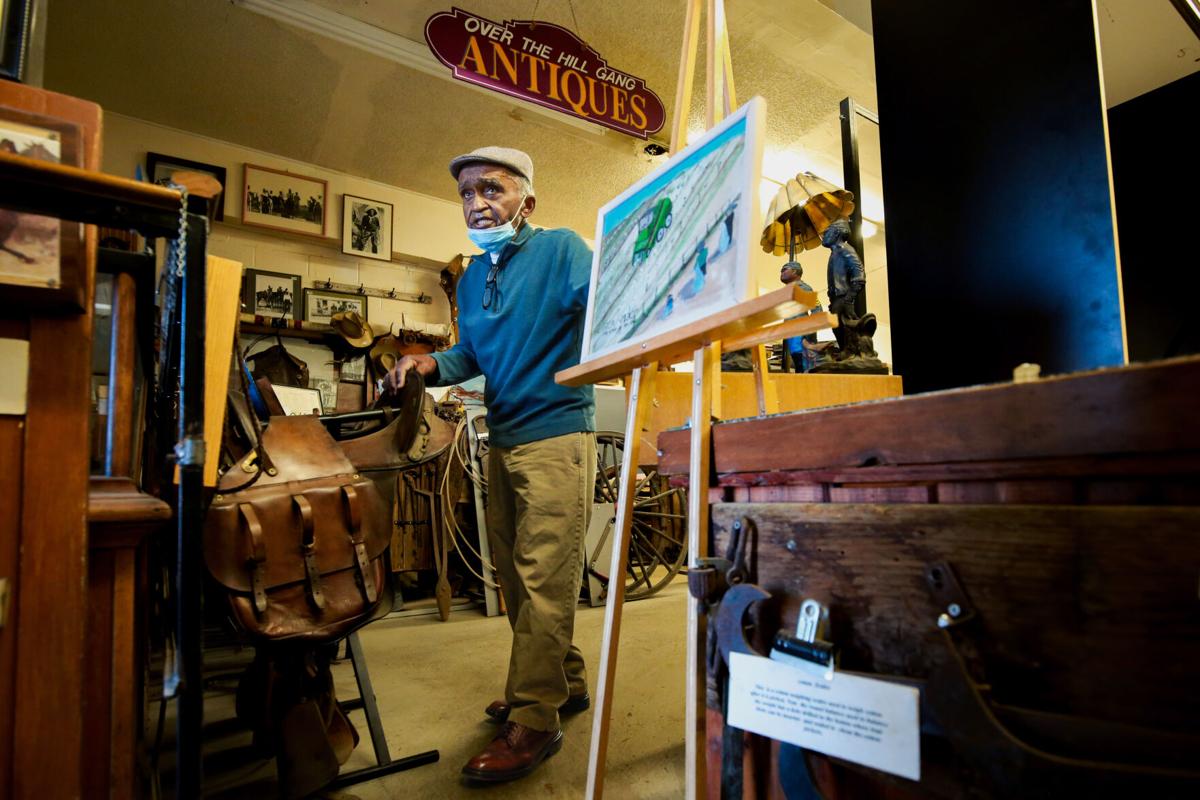Before there was the African American Museum of Southern Arizona, Tucson had the Afro American Heritage Museum on South Park Avenue.
In 1998, Charles Kendrick and his friend Shadrick “Shad” Blair combined their extensive collections of historical items and put them on display, free of charge, in the same building as Kendrick’s popular Mr. K’s barbecue joint.
The two men operated their museum — and added to it — for decades, but the enterprise has fallen on hard times in recent years.
Blair and Kendrick talked about closing the doors for good and selling off their antiques and artifacts in 2018, but the sale never quite happened. The building at Park and Silverlake Drive was still filled with old stuff when Blair died in 2020 at the age of 88.
These days, the cluttered, dusty museum is only open by request, but there are plans in the works to revive it.
Kendrick’s daughter, Rhonda Moniz, said she and her dad, now 90, want to find a way to renovate the building and incorporate the collection into a new community center of sorts. They’re calling it the Tucson Center for Black Life, and at the moment they’re working to get it federal tax-exempt status as a nonprofit.
Moniz said she is hoping they can work together with the new African American Museum of Southern Arizona.
Kendrick thinks Tucson has plenty of room for both operations. “We’re already here, and they’re just getting started,” he said. “The community needs something like this.”
Beverely Elliott thinks so, too.
“We absolutely want to collaborate and support his museum,” said Elliott, founder and executive director of the new museum with ties to the University of Arizona. “It’s always good for people to have a couple of places to go to.”
As far as she is concerned, Kendrick isn’t just a keeper of Black history in Tucson, he’s a major part of it.
In 1955, Kendrick became one of the first Black men to graduate from the UA School of Pharmacy on his way to a 42-year career as a pharmacist, much of it at Pima County Hospital. He also ran several business ventures on Tucson’s south side in addition to his barbecue restaurant.
“I was called the mayor of South Park,” he said.
Last year, Elliott invited Kendrick to record an oral history for the new museum.
In the resulting video, now available on the museum’s website, he talks extensively about his Depression-era childhood on the Texas-Arkansas border and his journey to Tucson as a teenager on a segregated train.
He had hoped things would be different in Arizona, but he faced many of the same institutional barriers here that he did in the South.
He wasn’t allowed to swim in certain public pools or drink from certain water fountains because of the color of his skin. He said his guidance counselor at Tucson High School once told him he had “the right color to be a dining car waiter.”
Kendrick went to the UA instead, only to be refused service in the dining hall, denied entry into the Air Force ROTC and rejected for a family tuition discount — all on his very first day of classes, and despite the fact that his father had worked as a janitor at the university for more than a decade.
Years later, when Kendrick decided to open a business in his South Park Neighborhood, about a block from his father’s house, he couldn’t find a bank that would loan money to a Black man so he had to build the building himself.
The heritage museum now takes up half of that structure, with more than 2,000 historical items covering such topics as slavery, Japanese internment, the civil rights movement, sports, music, racist advertising, Black cowboys and Buffalo Soldiers.
Antique furniture, tools, appliances and household items are arranged to create replicas of an early 20th century schoolhouse, a drug store with a soda fountain, a country store and a barber shop.
One of the oldest items in the collection is an original handwritten inventory from a slave plantation, which includes a lengthy roster of human beings, all with the same last name as the man who owned them.
Kendrick said the same thing was done on the plantation where his great-grandfather was enslaved. “Every slave on that plantation’s last name was Kendrick. That’s an actual document to prove how I lost my name, my language and my religion because of slavery.”
His interest in collecting old stuff and educating others about it is rooted in what he sees as the vast difference between the history people are taught in school and the actual experiences of people like him.
The heritage museum is a way to set the record straight. “History books are made by people who weren’t there,” Kendrick said.





